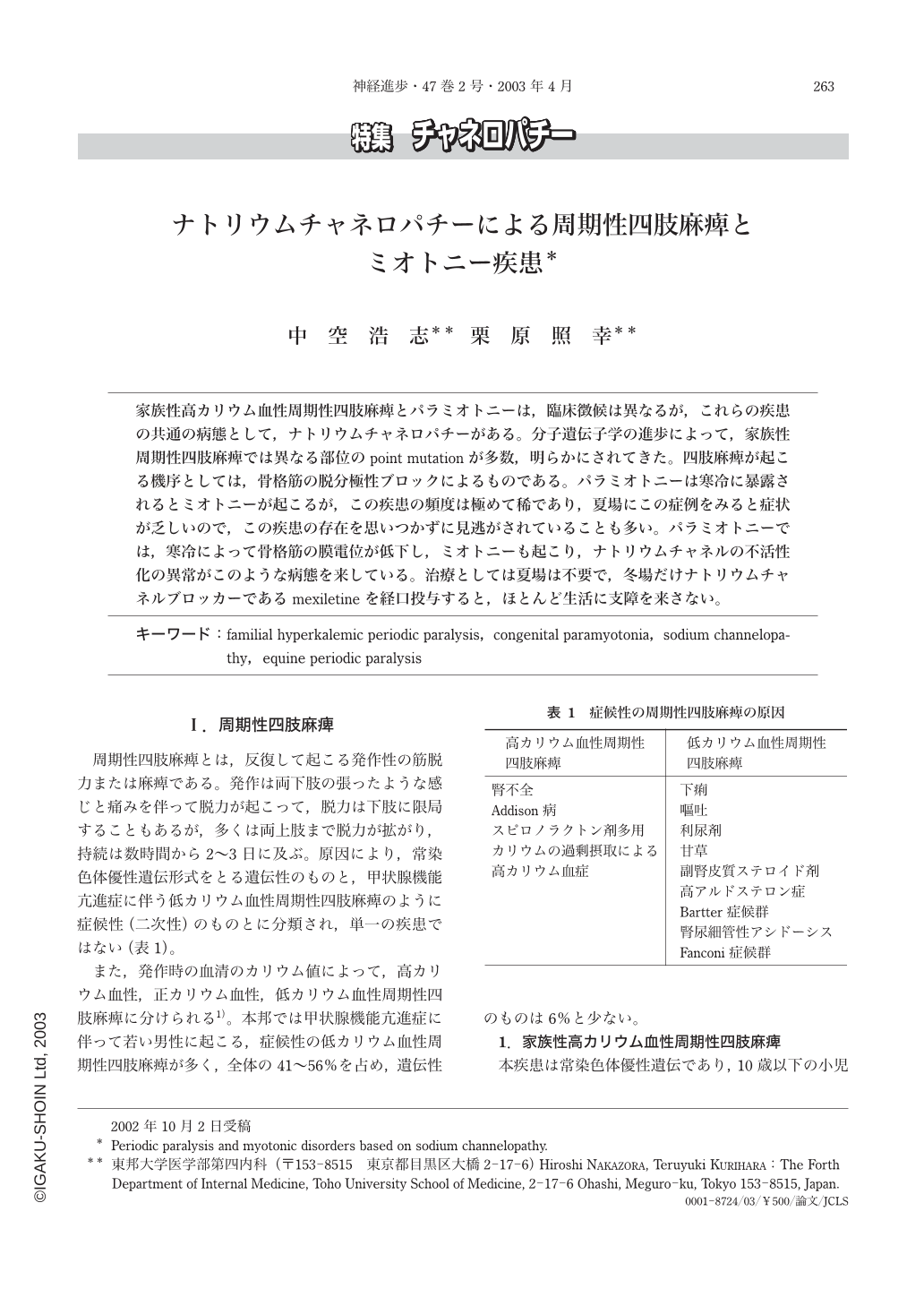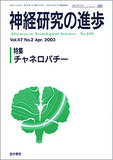Japanese
English
- 有料閲覧
- Abstract 文献概要
- 1ページ目 Look Inside
家族性高カリウム血性周期性四肢麻痺とパラミオトニーは,臨床徴候は異なるが,これらの疾患の共通の病態として,ナトリウムチャネロパチーがある。分子遺伝子学の進歩によって,家族性周期性四肢麻痺では異なる部位のpoint mutationが多数,明らかにされてきた。四肢麻痺が起こる機序としては,骨格筋の脱分極性ブロックによるものである。パラミオトニーは寒冷に暴露されるとミオトニーが起こるが,この疾患の頻度は極めて稀であり,夏場にこの症例をみると症状が乏しいので,この疾患の存在を思いつかずに見逃がされていることも多い。パラミオトニーでは,寒冷によって骨格筋の膜電位が低下し,ミオトニーも起こり,ナトリウムチャネルの不活性化の異常がこのような病態を来している。治療としては夏場は不要で,冬場だけナトリウムチャネルブロッカーであるmexiletineを経口投与すると,ほとんど生活に支障を来さない。
Familial hyperkalemic periodic paralysis and congenital paramyotonia have different clinical manifestations, but they have a common pathophysiology, Na channelopathy. Advanced molecular genetics disclosed various point mutations in familial hyperkalemic periodic paralysis. The pathophysiology of episodic paralysis of the muscles in this disorder is due to depolarizing block. Paramyotonia is a very rare disorder in Japan and myotonia occurs by cold exposure and in summer time the patients of this disorder scarcely present with any clinical manifestations and we tend to overlook this disorder. In paramyotonia the resting membrane potentials of the skeletal muscle depolarize and myotonia develops by cold exposure. As for treatment the patient requires Na channel blocker, mexiletine by mouth only during winter and he is able to carry out the daily activities with helps of this medication.

Copyright © 2003, Igaku-Shoin Ltd. All rights reserved.


